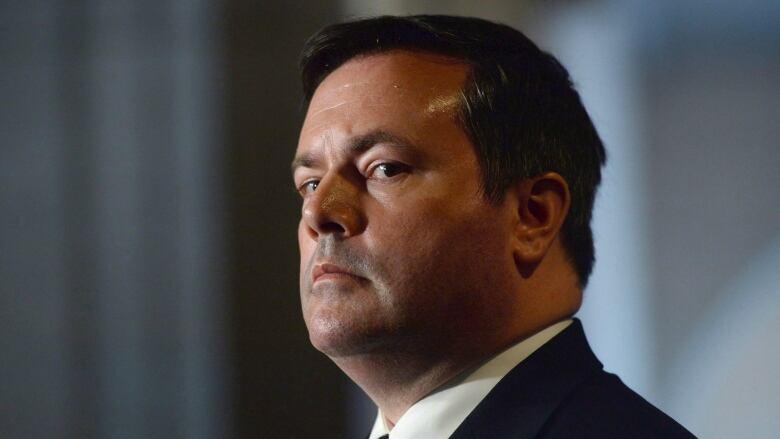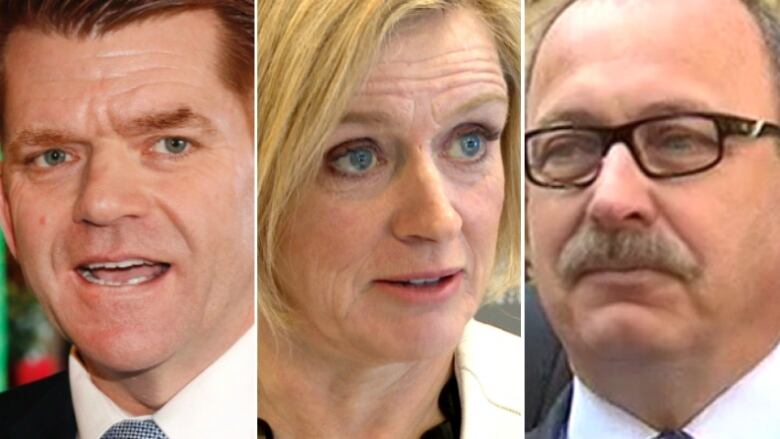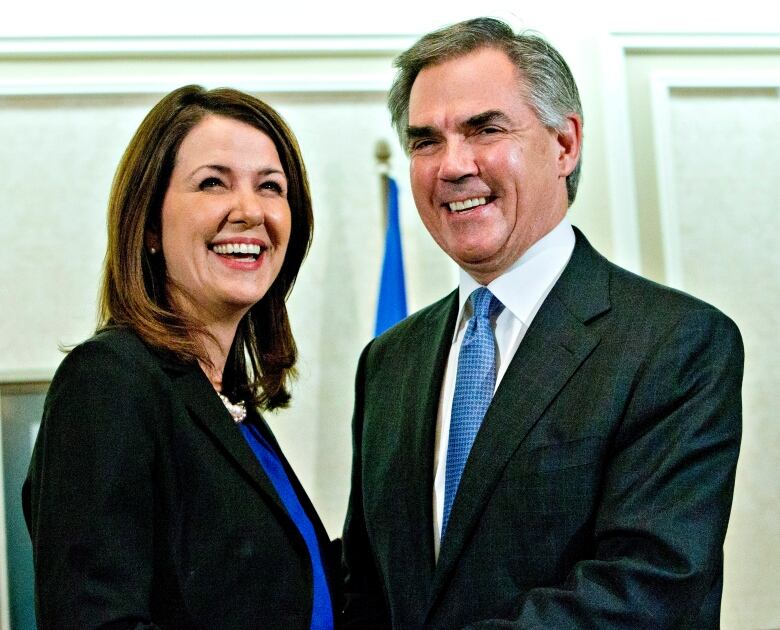Uniting Wildrose and the PCs in Alberta no easy task for Jason Kenney
Unifying Alberta's right might be a tough sell, for party members and voters alike

Jason Kenney mightbe planning to leave federal politics to enter the fray in Alberta, riding in as a white knight to unite the divided right and defeat Rachel Notley's governingNew Democrats.
It may prove even more difficult than manythink.
Kenney, a former high-profile cabinet minister in Stephen Harper's government, has beenwidely seen as a likelyfront-runner in the raceto replace the departedConservative leader.
- Kenney readying exit from federal politics, sources say
- Kenney'sAlberta ambitions 'much more than a trial balloon'
Instead, the job vacancy that Kenneymight now behopingto fill is the leaderof Alberta'sProgressive Conservativesa position abandoned by Jim Prentice afterthePCs, who hadgoverned the province uninterrupted from 1971, werereduced to third-party status in the 2015 election.
The party that vaulted ahead and currently occupies the role of the Official Opposition isWildrose, led by former Conservative MP Brian Jean. Kenney would needto absorb Wildroseinto the PCs in order to unite the right and create a common front to fightthe NDP.
Wildrose, however, is not much inclined to be absorbed. And Brian Jean doesn't want to go anywhere. With more seats (22 compared to nine for the PCs) and more money in the bank, hecould easily make the argument that it is the PCs that need to sacrifice themselves.

Wildrose's attempts to reposition itself havenot been subtle. Take, as an example, an image posted to itsFacebook page and Twitter account, boastingof the party's fundraising performance in the first quarter of 2016. Wildrose'snumberwascoloured a dark blue. The Progressive Conservative figurewaspresented in vibrantLiberal red.
Thank you, Alberta! We're so proud to have the support of grassroots conservatives around the province. #ableg #wrp pic.twitter.com/BMv68AAfcJ
—@TeamWildroseDespite recent turmoil that has weakened Jean's leadership, Wildrose is nevertheless a big meal for the PCs to swallow whole. Polls conducted in the province before the party's upheavalfound34 per cent ofAlbertanssupportedWildrose, onaverage, compared to27 per cent for the New Democrats and 26 per cent for the Progressive Conservatives.
Due to the regional breakdown of that vote, those numbers would likely be enough to deliver Wildrose a majority government if an election were held now. Likelybut it wouldstill bea close race,and that risk is not one thatJason Kenney and some other Albertansare willing to take.
The answer seems simple: unite the Wildrose and PC parties, and make it a sure thing.
Merger math is hard
The2003 merger of the federal Progressive Conservatives and Canadian Alliance, however, showsthe arithmetic is not actuallythat straightforward. Those two parties had captured a combined total of 37.7 per cent of the vote in the 2000 federal election; as a merged party, the Conservatives took just 29.6 per cent of the vote four years later. That was also lower than the combined totals of the PCand Reform parties in 1993 and 1997.
Similarly, there isevidence that Wildrosers and Tories do not mix so easily. Not only hasthe leadershipof each party ruled out being absorbed by the other, but polls conducted at the end of the 2015 provincial election suggest that their supporters are not readily interchangeable.

The final Global News/Ipsos poll of the campaign showed that 33 per cent of Wildrose voters picked the New Democrats as their second choice, compared to just 21 per cent who selected the PCs. Though PC voters were more likely to choose Wildrose as their second choice, a largeproportion of them also said they'd rather vote for the NDP.
In fact, removing either Wildrose or the PCs from the equation and distributing their votes according to this second choice polling would not have produced any winning, united right.Indeed, the NDP majoritywould have been largerif the partyhad run against a united right.
This could be the biggest obstacle for Kenney:the argument that Rachel Notley won because the right in Alberta was dividedfalls flat. Voters were looking for change after 44 years of PC rule. The NDP was that agent of change. And if Wildrose hadn't existed, enough of its voters would have gone to the NDP rather than re-electthe Tories.
The Kenney effect
It is an open question whetherJason Kenney, who was first elected to the House of Commons as a Reform MP, is himselfenough of an agent of changeto get Albertans back into the habit of voting PC.
And after rejecting the last PC takeover attempt, when Jim Prentice lured Danielle Smith and most of herWildrose caucus to his side of the aisle in December2014, are Wildrosers really ready to acquiesce two years later and destroy their own party in the process?

It might be a lot to ask. Elections law in Alberta prevents parties from merging: whichever party immolates itselfwould need to hand over any money it hadon handto Elections Alberta. Wildrose had twice as much cashas the Tories did at the end of 2015, and have outpaced PC fundraising effortsby a very wide margin this year.
Instead, mutual self-destruction and the creation of a new party might be the better way to go.
"Both PC and Wildrose voters are resistant to an entity that looks like a 'take over'by the other," says Marc Henry, president of ThinkHQ Public Affairs. Based on his research in the province, he thinks "both parties' voters are far less resistant to a new party."
Unless the two old parties decide to make way for this new entity, Henry says, "the vote is fractured even further, guaranteeing an NDP government."
In which caseJason Kenney couldindeed end up being the next leader of the Conservative Party:anewConservative Party ofAlberta.
- The Pollcast:Subscribe to ric Grenier's politics podcast
- Leader Meter: Track the federal party leaders' approval ratings
FollowricGrenier@308dotcomandCBCPolitics@cbcpoliticson Twitter












_(720p).jpg)


 OFFICIAL HD MUSIC VIDEO.jpg)
.jpg)



























































































